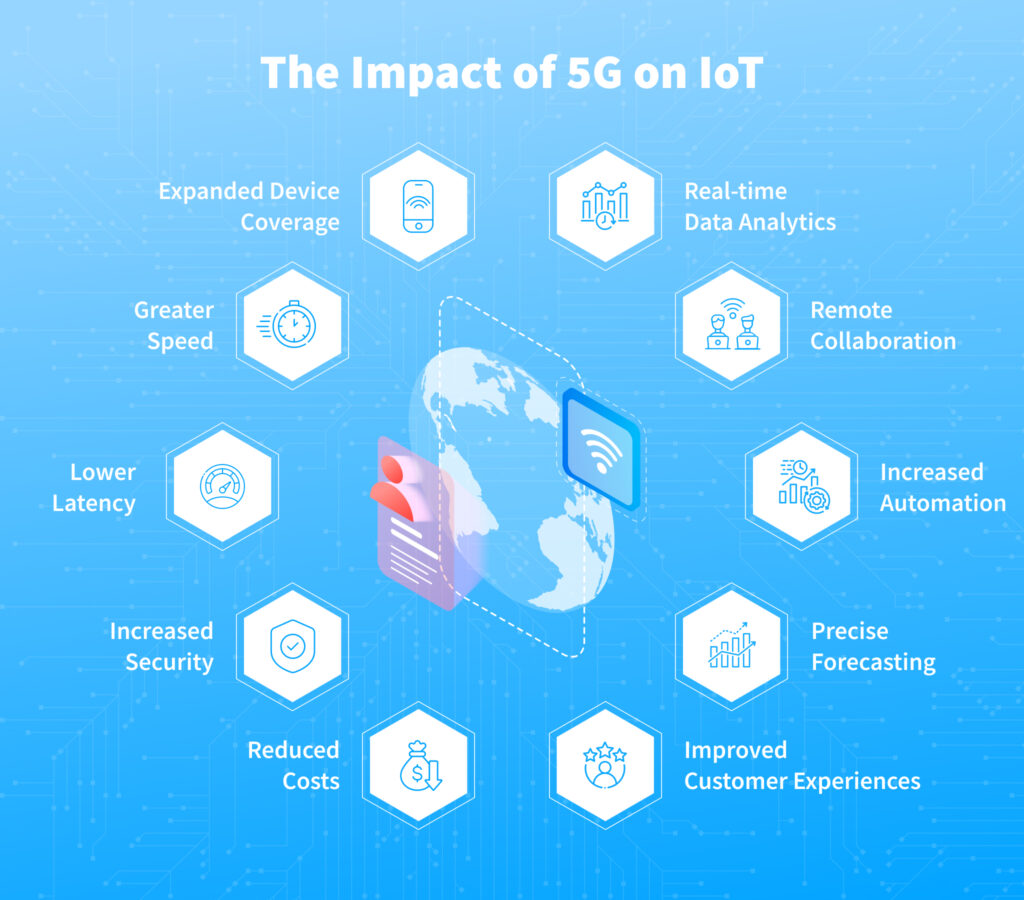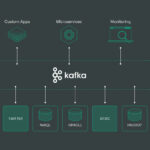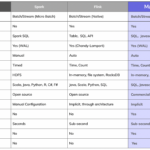As Big Data continues to play a pivotal role in driving insights and innovation across various industries, the emergence of 5G technology has opened up new possibilities for data-intensive applications. The integration of 5G in Big Data infrastructure has significantly enhanced the capabilities to collect, process, and analyze large volumes of data in real-time. This marriage of Big Data and 5G is revolutionizing the way organizations leverage data for decision-making, predictive analytics, and business intelligence. In this article, we will explore the role of 5G in enabling Big Data to thrive and power the Internet of Things (IoT) ecosystem.
The emergence of 5G technology is poised to revolutionize the ways we handle big data in conjunction with the Internet of Things (IoT). This article delves into the essential role that 5G plays in enhancing big data analytics and shaping the future of IoT applications.
Understanding 5G Technology
5G, the fifth generation of mobile communications, offers unprecedented speed, lower latency, and higher connectivity compared to its predecessors. While 4G LTE networks provide decent connectivity, 5G networks deliver potential speeds of up to 10 Gbps, enabling more devices to connect simultaneously with significantly reduced latency. Such improvements allow for immediate data processing and communication, which is critical in the world of big data.
The Intersection of 5G, Big Data, and IoT
The synergy between 5G, big data, and IoT technologies creates a powerful ecosystem for data analytics. With 5G capabilities, IoT devices can generate vast amounts of data in real time, leading to improved data acquisition and better insights. Here’s how 5G enables big data analytics through IoT:
1. Enhanced Data Transfer Speeds
5G’s high-speed data transfer allows IoT devices to send and receive information much faster than previous generations. This real-time data transmission is particularly beneficial for industries that rely on rapid decision-making, such as:
- Healthcare: Remote patient monitoring systems can transmit critical health data to healthcare professionals almost instantaneously.
- Transportation: Autonomous vehicles can share data about road conditions, traffic patterns, and more in a timely manner.
2. Improved Latency
Latency refers to the time it takes for data to travel from one point to another. With 5G, latency can drop to as low as 1 millisecond, which is a significant improvement over 4G’s average latency of 30-50 milliseconds. This low latency is crucial for applications requiring immediate feedback, such as:
- Smart cities: Real-time traffic management systems can adjust traffic signals based on immediate traffic conditions.
- Industrial automation: Manufacturing processes can be optimized through immediate data exchanges between machines.
3. Massive Device Connectivity
5G networks can support up to 1 million devices per square kilometer, making it easier to connect a vast number of IoT devices simultaneously. This scalability is essential for big data collection, enabling a wide range of devices—from environmental sensors to smart home appliances—to gather and transmit data continuously. With different sectors utilizing massive IoT deployments, more data can be generated and analyzed for better insights.
4. Increased Bandwidth
5G technology offers increased bandwidth, which allows large volumes of data to be transmitted quickly and efficiently. For big data, this means:
- Higher Data Rates: With more data being sent simultaneously, organizations can analyze data trends and patterns more comprehensively.
- Seamless Streaming: Applications requiring video streaming, like smart surveillance systems, can operate without interruptions or quality loss.
5. Edge Computing Integration
The combination of 5G and edge computing makes it possible to process data closer to its source, reducing the need to send large volumes of data back to centralized data centers. This integration enhances the big data landscape by:
- Reducing Latency: Processing data at the edge ensures quicker decision-making, which is vital for time-sensitive applications.
- Minimizing Bandwidth Needs: By processing data locally, only essential information is transmitted over the network, conserving bandwidth and improving efficiency.
6. Enhanced Analytics Capabilities
With the capabilities 5G brings to IoT, organizations can engage in advanced analytics, leveraging techniques such as machine learning and AI. The advantages include:
- Predictive Analytics: The massive amounts of real-time data generated can help organizations forecast future trends and behaviors.
- Optimized Operations: Manufacturing and supply chain operations can be fine-tuned by analyzing data collected from IoT devices constantly.
7. Smart Cities and Urbanization
The integration of 5G in city infrastructure leads to the development of smart cities. These cities utilize big data and IoT for enhanced urban services, such as:
- Smart Energy Management: Utilities can monitor energy consumption in real time, leading to more efficient energy distribution and sustainable practices.
- Public Safety: Enhanced surveillance and emergency response systems can respond faster to incidents based on real-time data.
Challenges and Considerations
Despite the myriad benefits, the integration of 5G with big data and IoT also presents challenges:
- Data Privacy and Security: As more devices connect, data breaches become a higher risk. Organizations must implement robust cybersecurity measures.
- Infrastructure Costs: Deploying 5G infrastructure can be costly and may require significant investment, particularly in rural areas.
- Standardization Issues: The lack of universal standards can hinder interoperability among devices and platforms, complicating data integration.
Future Prospects
The future of big data and IoT in the context of 5G technology looks promising, with potential advancements such as:
- Expanded Use Cases: New industries and applications using IoT with 5G will emerge, driving further innovation in data analytics.
- Improved Collaboration: Cross-industry partnerships will expand, leveraging diverse data for smarter solutions.
5G Deployment Across Industries
Different sectors will benefit uniquely from the combination of 5G, big data, and IoT:
- Healthcare: Real-time data from wearable devices will improve patient outcomes and streamline healthcare processes.
- Manufacturing: IoT-enabled machinery will feed data to analytics systems to optimize production lines and minimize downtime.
- Transportation and Logistics: Enhanced analytics will provide insights to improve delivery efficiencies and route planning.
The combination of 5G technology, big data, and IoT is transforming industries and creating new opportunities for innovation. As organizations adapt to this ecosystem, the full potential of big data analytics will continue to be realized, driving meaningful change across various sectors.
The integration of 5G technology in Big Data and IoT ecosystems holds the potential to revolutionize data processing and analysis capabilities on a scale previously unattainable. The ultra-fast speeds and low latency of 5G networks enable real-time data exchange, fostering innovation in fields such as predictive analytics, machine learning, and AI. As organizations harness the power of 5G in conjunction with Big Data, they are poised to unlock new insights, drive operational efficiency, and create enhanced customer experiences in the ever-evolving landscape of data-driven decision-making.














